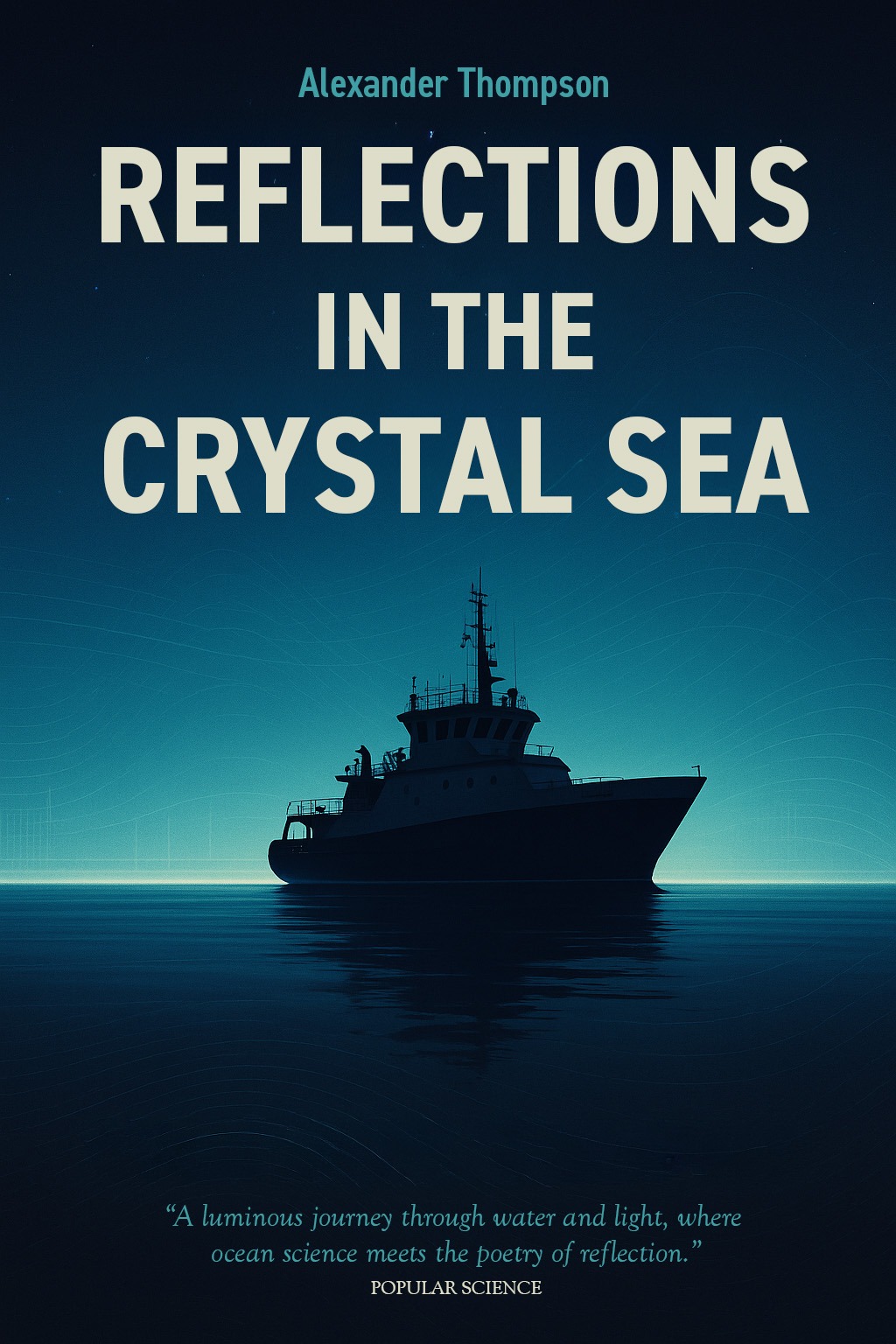Adopted several passages for class. The ray diagrams, the pan-of-water demo for albedo, and the plain-English explanation of LiDAR over water are gold for teaching. My students now argue about photons at lunch, which feels like a win.
Marine physicist Alexander Thompson invites readers onto the R/V Selene, a research vessel tracing light across water, ice, and salt. From McMurdo Sound's brinicles to the glassy gypsum lagoons of Baja California, he shows how photons carve paths, scatter in plankton blooms, and vanish into abyssal blue. With hyperspectral cameras, portable LiDAR, and a battered field notebook, he maps a world where reflection becomes measurement.
Reflections in the Crystal Sea blends optics and oceanography to explain climate signals hidden in color, glare, and shine. Thompson decodes satellite ocean color, ice–albedo feedbacks in the Fram Strait, and the mirror-like calm of Namibia's Dragon's Breath Cave as natural laboratories. Along the way, he unpacks radiative transfer with kitchen-sink demos, diffraction gratings, and ice cores, revealing why the sea sometimes looks like polished stone and sometimes like ink.
